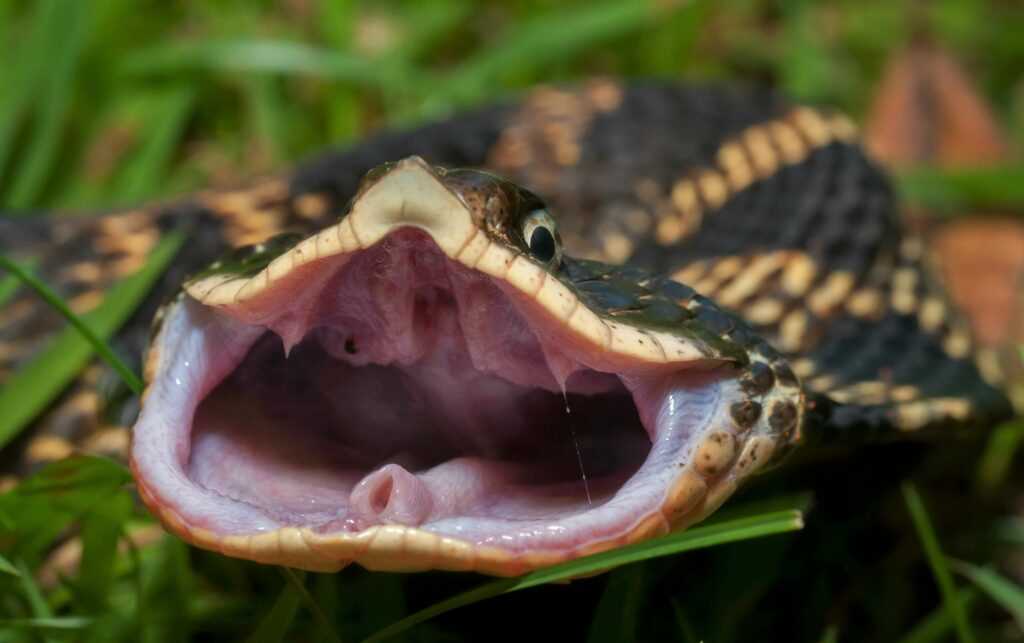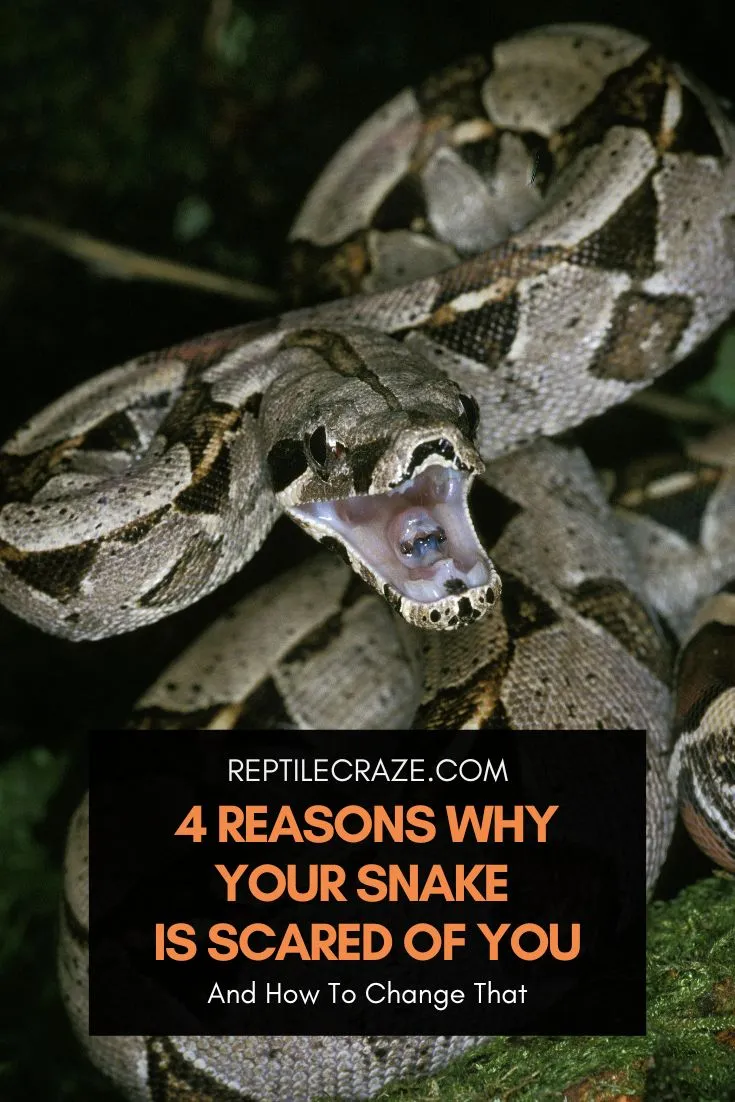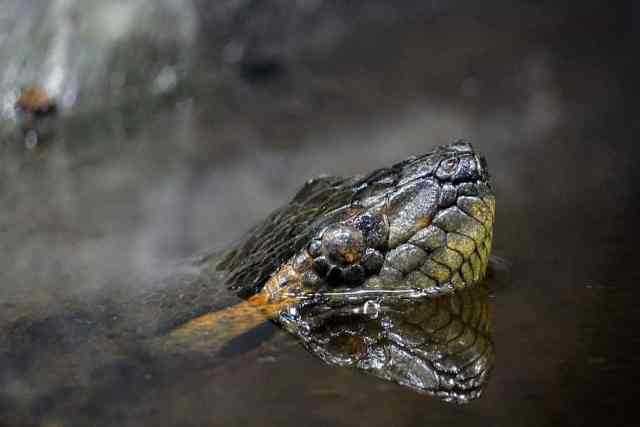Snakes are fascinating creatures with many unique abilities. One intriguing question that often comes to mind is just how long can a snake hold its breath? The ability to hold their breath for extended periods of time is essential for survival, especially for aquatic and semi-aquatic species.
One key adaptation is their ability to slow down their metabolic rate. By decreasing their oxygen consumption, snakes can effectively lengthen the duration of a single breath. Additionally, snakes have specialized adaptations in their lungs that enable efficient gas exchange, further maximizing their breathing capacity.
But just how long can a snake hold its breath? The answer varies depending on the species and individual snake. While some snakes can only hold their breath for a few minutes, others are capable of staying submerged for up to an hour or more. This extraordinary ability allows them to hunt for prey underwater, escape potential predators, and find refuge in aquatic environments.
The Respiratory System of Snakes
A snake’s ability to hold its breath for extended periods of time is due to its unique respiratory system. Unlike mammals, snakes do not have a diaphragm to control their breathing. Instead, they rely on elongated and flexible lungs that run the length of their bodies.
In addition to their flexible lungs, snakes also have a specialized structure called the tracheal lung. This is a section of the trachea that runs parallel to the snake’s esophagus. It is composed of thin, membranous tissue that allows oxygen to diffuse into the bloodstream.
Unlike mammals, who primarily use their lungs to exchange gases, snakes can also use their skin to absorb oxygen. This is especially useful for aquatic snakes or those living in low-oxygen environments. The skin of a snake is highly vascularized, meaning it is rich in blood vessels. This allows for efficient gas exchange between the environment and the snake’s bloodstream.
Overall, the respiratory system of snakes is highly adapted to their unique needs. It allows them to hold their breath for extended periods, whether it’s because they are underwater, hiding from predators, or waiting for prey to pass by.
Adaptations for Underwater Survival

Snakes have remarkable adaptations that enable them to survive underwater for extended periods of time. These adaptations allow them to hunt and escape predators in aquatic environments.
Firstly, snakes have a specialized respiratory system that allows them to hold their breath for long periods. Unlike mammals, snakes do not have lungs that expand and contract. Instead, they have a pair of elongated lungs that run the entire length of their body. This unique lung structure allows snakes to take in large amounts of oxygen and store it for prolonged periods underwater.
Secondly, snakes have the ability to slow down their metabolism to conserve oxygen. When submerged in water, their heart rate and metabolic rate decreases significantly. This physiological adaptation allows them to utilize oxygen more efficiently and extend the time they can spend underwater.
Thirdly, snakes possess a special type of scale called “scutes” that help them retain oxygen. These scutes are found on the ventral side of their body and act as a barrier, preventing water from entering their respiratory system. This adaptation is essential for their survival in aquatic environments as it allows them to minimize oxygen loss.
Factors Affecting a Snake’s Ability to Hold Its Breath

Several factors can affect the length of time a snake can hold its breath. The primary factor is the species of the snake. Different snake species have varying respiratory abilities, which influence their ability to hold their breath. For example, aquatic snakes may have adaptations that allow them to stay underwater for longer periods of time compared to terrestrial snakes.
The size of the snake also plays a role in its breath-holding capability. Generally, larger snakes have larger lung capacity, enabling them to hold their breath for a longer duration. Additionally, the metabolic rate of the snake is an essential factor. Snakes with lower metabolic rates have a slower oxygen consumption rate, allowing them to hold their breath for an extended period.
The activity level of the snake is another factor that affects its breath-holding ability. When snakes are inactive or at rest, their oxygen consumption decreases, enabling them to hold their breath for a longer time. On the other hand, when snakes are active or slithering, their oxygen consumption increases, limiting the duration they can hold their breath.
Environmental conditions also influence a snake’s ability to hold its breath. Water temperature, for example, can impact a snake’s metabolism and oxygen requirements. Colder water temperatures may slow down a snake’s metabolism, potentially allowing it to hold its breath for a longer duration. Conversely, warmer water temperatures may accelerate the snake’s metabolism, requiring it to resurface sooner for air.
Finally, the health and physiological condition of the snake can affect its breath-holding ability. A healthy snake with efficient respiratory functions will naturally have a better ability to hold its breath compared to a sick or injured snake.
Implications for Snake Behavior and Survival

One implication of a snake’s ability to hold its breath is its capacity to remain submerged for extended periods of time. This allows snakes to hunt for prey in aquatic environments, such as rivers and ponds, where they can surprise their prey and obtain a source of food. By remaining hidden underwater, snakes can also avoid detection by potential predators, increasing their chances of survival.
The ability to hold its breath also influences a snake’s behavior when it encounters challenging situations. For example, when a snake encounters an aggressive predator or a human threat, it may choose to submerge in water as a form of defense. By staying underwater and holding its breath, the snake can minimize the risk of being captured or attacked.
However, the ability of a snake to hold its breath is not unlimited, and there are factors that can affect its duration. The size and species of the snake, as well as its physiological condition, can influence how long it can hold its breath. For example, larger snakes generally have greater lung capacity and can hold their breath for longer periods compared to smaller snakes. Similarly, a snake that is well-fed and in good health may have a higher tolerance for extended periods of breath-holding.

I’m Lena Adams—a product of an unconventional upbringing in the African wilderness. My father, a daring explorer of African wildlife, sparked my fascination with reptiles, a passion that intertwined with the tragic loss of my mother during an expedition, leaving an indelible mark on my life. Driven to understand the creatures that captivated my parents, I embarked on my journey, sharing insights about reptiles, frogs, and lizards on my website. Through my explorations and conservation efforts, I honour my family’s legacy while seeking connections—to the creatures, nature, and the mother whose presence I yearn to understand.
